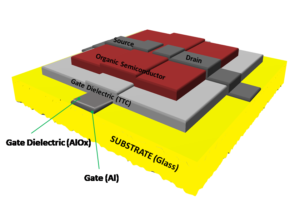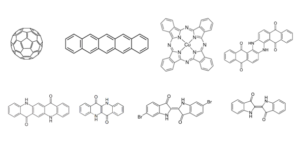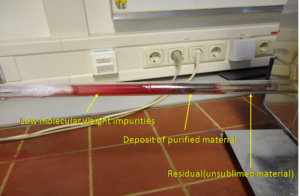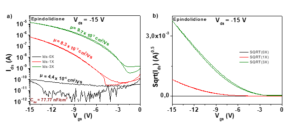We are delighted to share with you a collection of articles from Materials Chemistry Frontiers to showcase the exciting and recent developments in the field of Lithium-Based Batteries, including lithium-ion batteries, lithium-sulphur batteries and lithium-air batteries. This collection is free to access till July 19th 2020 .
Reviews
A new generation of energy storage electrode materials constructed from carbon dots
Ji-Shi Wei, Tian-Bing Song, Peng Zhang, Xiao-Qing Niu, Xiao-Bo Chen and Huan-Ming Xiong
Mater. Chem. Front., 2020,4, 729-749
https://doi.org/10.1039/C9QM00554D
Three-dimensional porous carbon materials and their composites as electrodes for electrochemical energy storage systems
Xiaoyang Deng, Jiajun Li, Liying Ma, Junwei Sha and Naiqin Zhao
Mater. Chem. Front., 2019,3, 2221-2245
https://doi.org/10.1039/C9QM00425D
Antimony-based materials as promising anodes for rechargeable lithium-ion and sodium-ion batteries
Jun He, Yaqing Wei, Tianyou Zhai and Huiqiao Li
Mater. Chem. Front., 2018,2, 437-455
https://doi.org/10.1039/C7QM00480J
Recent progress in Zn-based anodes for advanced lithium ion batteries
Lei Wang, Guanhua Zhang, Quanhui Liu and Huigao Duan
Mater. Chem. Front., 2018,2, 1414-1435
https://doi.org/10.1039/C8QM00125A
Multifunctional second barrier layers for lithium–sulfur batteries
Wei Fan, Longsheng Zhang and Tianxi Liu
Mater. Chem. Front., 2018,2, 235-252
https://doi.org/10.1039/C7QM00405B
Research articles
Multifunctional ultrasmall-MoS2/graphene composites for high sulfur loading Li–S batteries
Tianyu Tang, Teng Zhang, Lina Zhao, Biao Zhang, Wei Li, Junjie Xu, Long Zhang, Hailong Qiu and Yanglong Hou
Mater. Chem. Front., 2020,4, 1483-1491
https://doi.org/10.1039/D0QM00082E
Cationic covalent organic framework based all-solid-state electrolytes
Zhen Li, Zhi-Wei Liu, Zhen-Jie Mu, Chen Cao, Zeyu Li, Tian-Xiong Wang, Yu Li, Xuesong Ding, Bao-Hang Han and Wei Feng
Mater. Chem. Front., 2020,4, 1164-1173
https://doi.org/10.1039/C9QM00781D
The journey of lithium ions in the lattice of PNb9O25
Haoxiang Yu, Jundong Zhang, Runtian Zheng, Tingting Liu, Na Peng, Yu Yuan, Yufei Liu, Jie Shu and Zhen-Bo Wang
Mater. Chem. Front., 2020,4, 631-637
https://doi.org/10.1039/C9QM00694J
The suppression of lithium dendrites by a triazine-based porous organic polymer-laden PEO-based electrolyte and its application for all-solid-state lithium batteries
N. Angulakshmi, R. Baby Dhanalakshmi, Murugavel Kathiresan, Yingke Zhou and A. Manuel Stephan
Mater. Chem. Front., 2020,4, 933-940
https://doi.org/10.1039/C9QM00707E
A novel ordered hollow spherical nickel silicate–nickel hydroxide composite with two types of morphologies for enhanced electrochemical storage performance
Qiushi Wang, Yifu Zhang, Jinqiu Xiao, Hanmei Jiang, Xiaojuan Li and Changgong Meng
Mater. Chem. Front., 2019,3, 2090-2101
https://doi.org/10.1039/C9QM00392D
Ultrafine MoO3 nanoparticles embedded in porous carbon nanofibers as anodes for high-performance lithium-ion batteries
Xiu Liu, Yuan Liu, Xiaodong Yan, Jin-Le Lan, Yunhua Yu and Xiaoping Yang
Mater. Chem. Front., 2019,3, 120-126
https://doi.org/10.1039/C8QM00497H
3D hollow reduced graphene oxide foam as a stable host for high-capacity lithium metal anodes
Pengcheng Yao, Qiyuan Chen, Yu Mu, Jie Liang, Xiuqiang Li, Xin Liu, Yang Wang, Bin Zhu and Jia Zhu
Mater. Chem. Front., 2019,3, 339-343
https://doi.org/10.1039/C8QM00499D
V2(PO4)O/C@CNT hollow spheres with a core–shell structure as a high performance anode material for lithium-ion batteries
Bin Xiao, Wen-hai Zhang, Hai-feng Xia, Zhi-teng Wang, Lin-bo Tang, Chang-sheng An, Zhen-jiang He, Hui Tong and Jun-chao Zheng
Mater. Chem. Front., 2019,3, 456-463
https://doi.org/10.1039/C8QM00619A
Graphene-based Fe-coordinated framework porphyrin as an interlayer for lithium–sulfur batteries
Jin-Lei Qin, Bo-Quan Li, Jia-Qi Huang, Long Kong, Xiang Chen, Hong-Jie Peng, Jin Xie, Ruiping Liu and Qiang Zhang
Mater. Chem. Front., 2019,3, 615-619
https://doi.org/10.1039/C8QM00645H
A 2D/2D graphitic carbon nitride/N-doped graphene hybrid as an effective polysulfide mediator in lithium–sulfur batteries
Junsheng Ma, Mingpeng Yu, Huanyu Ye, Hongquan Song, Dongxue Wang, Yanting Zhao, Wei Gong and Hong Qiu
Mater. Chem. Front., 2019,3, 1807-1815
https://doi.org/10.1039/C9QM00228F
A sandwich-type sulfur cathode based on multifunctional ceria hollow spheres for high-performance lithium–sulfur batteries
Jianwei Wang, Bo Zhou, Hongyang Zhao, Miaomiao Wu, Yaodong Yang, Xiaolei Sun, Donghai Wang and Yaping Du
Mater. Chem. Front., 2019,3, 1317-1322
https://doi.org/10.1039/C9QM00024K
Synthesis and thermodynamic investigation of MnO nanoparticle anchored N-doped porous carbon as the anode for Li-ion and Na-ion batteries
Ya-Nan Sun, Liangtao Yang, Zhu-Yin Sui, Li Zhao, Mustafa Goktas, Hang-Yu Zhou, Pei-Wen Xiao, Philipp Adelhelm and Bao-Hang Han
Mater. Chem. Front., 2019,3, 2728-2737
https://doi.org/10.1039/C9QM00599D
An insight into the pyrolysis process of metal–organic framework templates/precursors to construct metal oxide anode materials for lithium-ion batteries
Ang Li, Binbin Qian, Ming Zhong, Yingying Liu, Ze Chang and Xian-He Bu
Mater. Chem. Front., 2019,3, 1398-1405
https://doi.org/10.1039/C9QM00098D
Li4Ti5O12 quantum dot decorated carbon frameworks from carbon dots for fast lithium ion storage
Lin Li, Xinnan Jia, Yu Zhang, Tianyun Qiu, Wanwan Hong, Yunling Jiang, Guoqiang Zou, Hongshuai Hou, Xianchun Chen and Xiaobo Ji
Mater. Chem. Front., 2019,3, 1761-1767
https://doi.org/10.1039/C9QM00259F
A general low-temperature synthesis route to polyanionic vanadium phosphate fluoride cathode materials: AVPO4F (A = Li, Na, K) and Na3V2(PO4)2F3
Nicolas Goubard-Bretesché, Erhard Kemnitz and Nicola Pinna
Mater. Chem. Front., 2019,3, 2164-2174
https://doi.org/10.1039/C9QM00325H
Revisiting and improving the preparation of silicon-based electrodes for lithium-ion batteries: ball milling impact on poly(acrylic acid) polymer binders
Thibaut Chartrel, Mariama Ndour, Véronique Bonnet, Sébastien Cavalaglio, Luc Aymard, Franck Dolhem, Laure Monconduit and Jean-Pierre Bonnet
Mater. Chem. Front., 2019,3, 881-891
https://doi.org/10.1039/C8QM00660A
Arranged redistribution of sulfur species and synergistic mediation of polysulfide conversion in lithium–sulfur batteries by a cactus structure MnO2/carbon nanofiber interlayer
Zhihao Yu, Tianji Gao, TrungHieu Le, Jie Cheng and Ying Yang
Mater. Chem. Front., 2019,3, 948-954
https://doi.org/10.1039/C9QM00022D
Silicon nanoparticle-sandwiched ultrathin MoS2–graphene layers as an anode material for Li-ion batteries
Ujjwala V. Kawade, Anuradha A. Ambalkar, Rajendra P. Panmand, Ramchandra S. Kalubarme, Sunil R. Kadam, Sonali D. Naik, Milind V. Kulkarni and Bharat B. Kale
Mater. Chem. Front., 2019,3, 587-596
https://doi.org/10.1039/C8QM00568K
The formation of yolk–shell structured NiO nanospheres with enhanced lithium storage capacity
Jian Wang, Panpan Su, Jing Zhang, Fangfang Wang, Yali Chen, Hao Liu and Jian Liu
Mater. Chem. Front., 2019,3, 1619-1625
https://doi.org/10.1039/C9QM00328B
Electric field effect in a Co3O4/TiO2 p–n junction for superior lithium-ion storage
Huabin Kong, Chunshuang Yan, Chade Lv, Jian Pei and Gang Chen
Mater. Chem. Front., 2019,3, 909-915
https://doi.org/10.1039/C9QM00007K
A novel lithium-ion hybrid capacitor based on an aerogel-like MXene wrapped Fe2O3 nanosphere anode and a 3D nitrogen sulphur dual-doped porous carbon cathode
Xiao Tang, Hao Liu, Xin Guo, Shijian Wang, Wenjian Wu, Anjon Kumar Mondal, Chengyin Wang and Guoxiu Wang
Mater. Chem. Front., 2018,2, 1811-1821
https://doi.org/10.1039/C8QM00232K
In situ synthesis of Cu2O–CuO–C supported on copper foam as a superior binder-free anode for long-cycle lithium-ion batteries
Xiaoming Lin, Jia Lin, Jiliang Niu, Jinji Lan, R. Chenna Krishna Reddy, Yuepeng Cai, Jincheng Liu and Gang Zhang
Mater. Chem. Front., 2018,2, 2254-2262
https://doi.org/10.1039/C8QM00366A
Fe/Fe3C@graphitic carbon shell embedded in carbon nanotubes derived from Prussian blue as cathodes for Li–O2 batteries
Yanqing Lai, Yifeng Jiao, Junxiao Song, Kai Zhang, Jie Li and Zhian Zhang
Mater. Chem. Front., 2018,2, 376-384
https://doi.org/10.1039/C7QM00503B
A novel hierarchical precursor of densely integrated hydroxide nanoflakes on oxide microspheres toward high-performance layered Ni-rich cathode for lithium ion batteries
Yan Li, Xinhai Li, Zhixing Wang, Huajun Guo, Tao Li, Kui Meng and Jiexi Wang
Mater. Chem. Front., 2018,2, 1822-1828
https://doi.org/10.1039/C8QM00326B
In situ TEM study of lithiation into a PPy coated α-MnO2/graphene foam freestanding electrode
Mohammad Akbari Garakani, Sara Abouali, Jiang Cui and Jang-Kyo Kim
Mater. Chem. Front., 2018,2, 1481-1488
https://doi.org/10.1039/C8QM00153G
Directionally assembled MoS2 with significantly expanded interlayer spacing: a superior anode material for high-rate lithium-ion batteries
Qilin Wei, Min-Rui Gao, Yan Li, Dongtang Zhang, Siyu Wu, Zonghai Chen and Yugang Sun
Mater. Chem. Front., 2018,2, 1441-1448
https://doi.org/10.1039/C8QM00117K
Comments Off on Lithium-based Batteries – A collection of articles from Materials Chemistry Frontiers








































